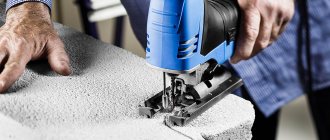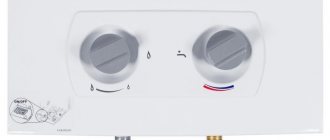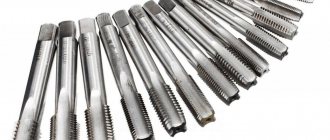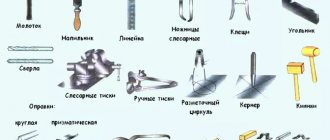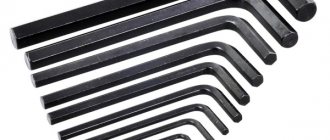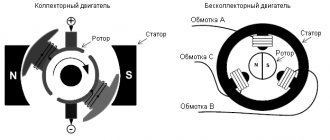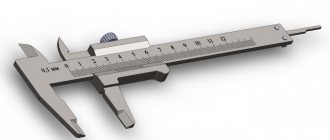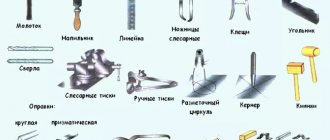Some technical characteristics
To begin with, we note that the type of tool in question can only be used in conjunction with special holders.
This is due to the fact that a lot of force must be transferred to the die during machining. One holder can be used to work simultaneously with different types of lechers. The following information should also be taken into account:
- Left-handed dies are used to produce left-handed threads. Today they are used extremely rarely. To identify the tool, the designation “LH” is applied. Such a thread is required when the element is constantly in rotation during operation.
- Pipe versions differ from metric ones; for identification, the symbol “G” is applied to the surface of the body.
- To obtain a cone thread, a conical pipe tool is used. Most often used on production lines for the production of machine tools or fuel pipelines. Indicated by applying the letter “K” to the surface of the body.
When choosing a tool, you should pay attention to the concept of pitch - the distance formed between two adjacent turns. It is worth considering that the die has a main and additional step
Rules of procedure
When working with pipes, it is important to stock up on dies with a pipe clamp and a wrench. The die is selected taking into account the type of thread required
This can be determined by checking the stamp or inspection. The dies must be marked. The data on them will give an idea of what brand the tool is made from.
Most pipes require straight threads. Also, before working, you need to determine its direction: right or left. To do this, a letter indicator is depicted on the dies: “L” is left, and “P” is right. The die also indicates what grade of steel it belongs to, this makes it possible to choose the right tool for cutting stainless steel pipes.
The cutting rules are quite simple:
1). Prepare the pipe for cutting. To do this, the chamfer is removed with a file, and the area is treated with an oil solution.
2). Insert the die into the holder, securing it with screws.
3). Bring the die to the product and make several circular rotations in the required direction of the thread.
4). Lightly press down the die to embed it into the material.
Scrolling algorithm:
- 2-3 turns in one direction;
- half a turn to the other.
And so on until the end of cutting
In this case, it is very important to keep the pipe and die strictly perpendicular. Otherwise, the thread will “walk”, which will affect the quality of the connection.
The arrangement of elements, as well as thread cutting, is demonstrated on video and photo materials for better results. Checking thread quality is easy. To do this, it is enough to screw the nut if it is screwed along the outer diameter of the pipe. The most accurate cut is obtained with a sliding die. It will help out if you urgently need to replace a piece of pipe that has a threaded connection.
Also, when choosing dies, it is important to consider what kind of thread will be made, external or internal. High-quality work will allow you to make a sealed threaded connection even in pressure water pipes
Let's sum it up
As you can see, making your own carving using dies is not at all difficult. To do this, it is enough to choose the right tool, put in a little effort and accuracy. Probably, many representatives of the male half of humanity remember how similar problems were solved in labor lessons at school. Therefore, for the majority, it will only be necessary to remember the acquired skills and apply them in adulthood. It’s like riding a bicycle: you only need to learn once to feel confident in the saddle even after a long break.
Classification of dies
Recently, tool steel has been used in the manufacture of dies, which is highly resistant to abrasion. A die for cutting external threads can be classified according to the following criteria:
- Form.
- Cutting method.
- Housing design.
The following dies are distinguished by shape:
- In the form of a square. The outer part of the housing can be square-shaped, thereby simplifying the transmission of force.
- Tubular ones have become very widespread.
- In the form of a hexagon.
- An instrument with a round body shape has also become widespread. They allow you to obtain threads of fine or coarse pitch, metric or inch type.
The thread cutting tool can be of the following type according to its design characteristics:
- Solid - a fairly simple instrument that has a solid body. Characterized by low cost and ease of use.
- Split ones have a complex shape of internal space.
- Sliding machines have a complex design that can be used for cutting threads on cylindrical surfaces of various diameters. This is achieved by creating a housing with moving elements.
According to the method of thread cutting, the tool is divided into the following groups:
- For round threads.
- For cylindrical.
- For tapered threads.
The most widely used tool is a round one, since it can be used for cutting threads in one pass.
Rules for cutting threads using dies
Only if the established rules of work are observed, it is possible to obtain a surface with high precision and quality. A die for cutting external threads must be used in conjunction with a special driver, through which force is transmitted.
Options for cutting with round and sliding dies
When considering how to cut a thread with a die, you should pay attention to the following points:
- To determine the exact parameters of the tool, you should pay attention to the markings that are applied to the body. Labeling is carried out in accordance with established standards. Some experts can determine the parameters of a product “by eye”.
- The whole process begins with preparing the workpiece. You can ensure an easy start by chamfering, for which you can use a file. The chamfer is made at an angle of 45 degrees and should not be large. It is necessary to ensure that the metal is removed evenly.
- Cutting turns should not be carried out on a dry surface, as this leads to rapid wear of the cutting edge. A special lubricant is added to the cutting zone, which significantly simplifies the operation by reducing friction. Lubrication can be represented by motor oil or grease.
- The cutting process involves making two turns, followed by one turn in the opposite direction. Due to the movement of the tool in the opposite direction, chips are removed from the cutting zone, which leads to a simplified stroke and an increase in the quality of the work performed. For the first few turns, you need to ensure that the tool is in a strictly vertical position, otherwise the quality of the resulting surface will be poor.
- In the future, every two revolutions during cutting should be about a half-turn. This ensures a smoother ride. If the housing heats up during processing, you should take breaks. Too high a temperature causes plasticity of the metal, which leads to a decrease in wear resistance.
The quality of the resulting turns is checked when using a nut with the required diameter and thread parameters. The first pass may occur with slight difficulties, but within normal limits. The second and subsequent checks should be carried out effortlessly.
Best answers
Kajakas:
A die is a thread-cutting tool for cutting external threads manually or on a machine.
A die and a die are a thread-cutting tool for cutting external threads manually or by machine. Currently, the division into dies and lerks has ceased to exist. Previously, the name die was used in relation to a typesetting and adjustable threading tool, preferably of large diameters. The term ladle was used to refer to a plate with a threaded hole and grooves for removing chips. Lanyards were used to make more precise carvings of small diameters.
Dies are designed for cutting or calibrating external threads in one pass. The most common dies are for cutting threads with a diameter of up to 52 mm. The die is a hardened nut with axial holes that form cutting edges. As a rule, 3-6 chip holes are made on the dies to remove chips. The thickness of the die is 8-10 turns. The cutting part of the die is made in the form of an internal cone. The length of the fence part is 2-3 turns. Dies are made from alloy steels (9ХС, ХВСГФ), high-speed steels (Р18, Р6М5, Р6М5К5, Р6М5К8), and more recently from hard alloys. They are marked with the designation and degree of accuracy of the thread being cut, and the grade of steel (9ХС is not indicated).
Seryozhka Votsenzuk:
The die and the lerka are the same thing, they are just called differently. Apparently, whoever had any accent was called that.
MwenMas:
Nothing
Sasha Novikov:
Same
Nikolay:
Die tool for turner, tool for plumber
What is a die and what is it used for?
A die is a common tool used for cutting external threads and calibrating them. These devices are used to produce pipes, rods, bolts, studs, as well as other parts and products.
Photo #1: Die
Die design
The design of the die resembles a large round nut. There is a hole with cutting edges in the center. It has coils (8–10 pcs.). They differ in sharpness of sharpening.
2–3 turns - the intake part. These turns are sharpened as sharply as possible. The rest (6–7 pieces) are the calibrating part. These turns are needed to remove chips when cutting threads.
Image No. 1: 1 - fence part; 2 - calibrating part; 3 - chip groove
How does a die differ from a lerka?
Beginners in plumbing often ask what a tool is and how it differs from a die. Now - nothing! Previously, the following conditional division existed.
Dies were called adjustable tools of large diameters, and dies were non-separable analogues intended for cutting high-precision threads. Now this division does not exist. All devices are called dies.
Photo No. 2: The die and the die are the same tool
Purpose of the device
To connect two metal pipes, welding or threaded connections are used. The disadvantage of a welded connection is the impossibility of disconnecting it when the need arises. When working with welding, experience is required, since the connection must not only be strong, but also reliable. The presence of threads does not require the use of a welding machine, which simplifies the process of connecting two pipes. Such a connection is reliable, durable, and can also be disconnected at any time using two keys.
To connect a pipe using a threaded connection, you need to cut a thread. For this purpose, a tool called a clamp is used. Its use makes it possible to obtain threads of the following diameters:
- half an inch;
- ¾;
- inch;
- an inch and a quarter.
The advantage of a threaded connection is that this method does not damage the zinc layer, as with welding. This protects the pipe from the negative effects of corrosion, extending its service life. The tool is used to obtain a strong connection between water and steam pipes that can withstand heavy loads of temperature and pressure.
What does the device in question look like?
The pipe clamp is a prototype of the die, or rather, it came from the die. This is a simplified version of the cutting blade, although there are products that are quite expensive. The product differs from the lecher and die in that it has a collapsible design. The die is made entirely of durable steel, and only the cutters are cast from it in the die.
To ensure efficient threading of the pipe, the tool uses durable cutters and a holder made of ordinary metal. The main structural elements of a pipe clamp include:
- A holder that acts as a base. The cutters can be replaced in the holder, since the design is collapsible.
- Incisors. They are available in various diameters and must be replaced in the holder when grinding the cutting edge.
The design of the simplest product has the shape of a guide with clamps for cutters. The force is applied to the handles with which the device is equipped. If there are no handles, then threading is done by moving the die with a pipe wrench or wrench.
Types of instruments
Usually the kit comes with a set of dies for cutting threads of different diameters, and the kit looks like this.
Threading tools for pipes are classified into the following types:
- Manual thread-cutting die. The product is driven by two handles or wrenches. Using this type of product, it is convenient to cut threads on pipes with a diameter of up to one inch.
- Manual clamp with ratchet. The ratchet allows for reciprocating movements of the cutting tool when performing work. The advantage of such products is that they simplify the work of producing large-diameter threaded connections. Using such a device is similar to screwing a nut onto a bolt using a ratchet wrench.
- Electric tool. The electrical device ensures maximum operating comfort. It is rational to use such a tool only when you have to perform the corresponding work on a daily basis in large volumes.
All about dies
A die or die is a device used to cut external threads of various types. It is represented by a small nut on which there is an edge and a chip outlet. The threaded device can have thread pitch sizes from eight to ten.
Thread pitch is the distance between adjacent threaded threads.
The working area of dies is iron pipes and rods. Threads come in conical and cylindrical shapes. To obtain a high-quality thread, you need to cut in one pass. The die has a cutting edge. To make cylindrical threads, dies with two parts of the working area are used - calibrating and cutting. The calibrating part forms the final diameter and thread profile.
Classification of dies
Ledgers are divided into: tubular, square, round and hexagonal.
They are also divided by structure:
- solid;
- sliding (prismatic);
- cut.
The round lecher is the most widely used. It is threaded in one pass, and not in several, like sliding ones. These dies can cut threads at different pitches. They can also be used to cut pipe and inch threads. The working part of round dies is not subjected to grinding. The outside diameter will depend on the size of the chip guards and the size of thread required.
Types of dies
This instrument is classified by body shape and design. Depending on the shape of the case, there are the following types of dies:
- tubular;
- square;
- hexagonal;
- round.
The design of the die is most characterized by the design of the housing, which can be:
- whole;
- sliding;
- split.
Let's briefly look at the most popular designs. The most widely used die is a round die, with which you can cut threads of no more than the second accuracy class; it is used for cutting metric, pipe and inch threads with large, regular or fine pitch. When working manually, this type of tool is fixed in the driver with locking screws; when working by machine, it is fixed in special thread-cutting chucks. Using screws you can change the diameter of the thread being cut.
The outer diameter of a round die depends on the diameter of the thread and chip holes. The larger the diameter of the chip holes, the easier it is to remove chips. But, accordingly, a greater consumption of material is required, and larger sizes of components - knobs, chucks, etc.
To obtain threads of a high class of accuracy (metric, conical, pipe), solid dies are used, which have the highest rigidity indicators. The disadvantage is reduced wear resistance compared to tools in other types of housings.
Sliding dies. They consist of two parts, which are installed in the clamp and secured there with a screw and a cracker. The screw adjusts the thread diameter. As a rule, a die is sold with a set of dies of various diameters. Split strips are also adjustable, but their disadvantage is low rigidity and, accordingly, a decrease in thread accuracy. Also, this type of dies is slightly springy, which leads to a change in diameter within 0.1 - 0.3 mm.

